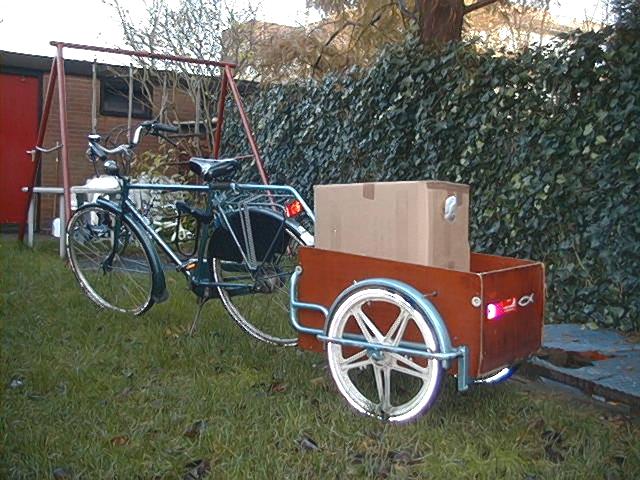
22. GRC and the Environment
When practicing the radio collecting hobby, I want to preserve not only some valuable historical technical pieces, but also human health and the environment.
Electricity
 In my house I use so called "green energy".
This is electricity that is produced by renewable resources such as water and wind energy.
Thus, all testing and demonstrating of radios, the soldering and use of mains powered test equipment, and updating the
In my house I use so called "green energy".
This is electricity that is produced by renewable resources such as water and wind energy.
Thus, all testing and demonstrating of radios, the soldering and use of mains powered test equipment, and updating the  site are powered by clean electricity.
site are powered by clean electricity.
Transport and Shipping
 Usually, local transportation of radios is also powered by renewable energy because I transport radios by bicycle.
Car transportation of radios for GRC is used only incidentally.
Usually, local transportation of radios is also powered by renewable energy because I transport radios by bicycle.
Car transportation of radios for GRC is used only incidentally.
Shipping of sold radios is always by surface transportation; air transport is banned (as of 2002) because of the extreme pollution caused by airplanes.
Tube radio's: The myth of energy waste
Is it a waste of energy to listen to a tube radio that consumes 60W of power, while a transistor radio will play the same stations using only 6W of power?
It isn't, because of the way modern transistor radios are designed.
They have a power supply that is connected to mains power continuously, followed by an on/off switch in the low voltage circuit.
As a result, your little cute transistor radio not only consumes power during the hour it is on, but also during the twenty three hours of the day that it is switched off; a typical consumption during these hours is 3 to 5 Watts.
Tube radios have their power switch in the mains circuit and consequently do not consume power when off.
The consequences of this are easy to compute.
For a radio that is used only about one to two hours per day, it is more economical and resource-saving to install a tube radio.
(Of course, on top of that, the tube radio is nicer!)
The same holds for television sets, PC speakers and most other small electronic equipment.
Unless you pull the plug each time you don't listen.
Gerard Tel

 In my house I use so called "green energy".
This is electricity that is produced by renewable resources such as water and wind energy.
Thus, all testing and demonstrating of radios, the soldering and use of mains powered test equipment, and updating the
In my house I use so called "green energy".
This is electricity that is produced by renewable resources such as water and wind energy.
Thus, all testing and demonstrating of radios, the soldering and use of mains powered test equipment, and updating the  Usually, local transportation of radios is also powered by renewable energy because I transport radios by bicycle.
Car transportation of radios for GRC is used only incidentally.
Usually, local transportation of radios is also powered by renewable energy because I transport radios by bicycle.
Car transportation of radios for GRC is used only incidentally.